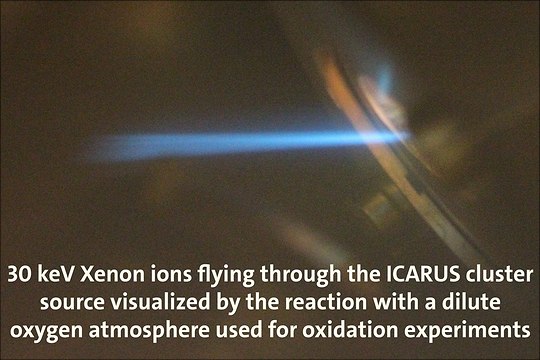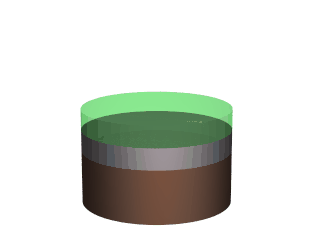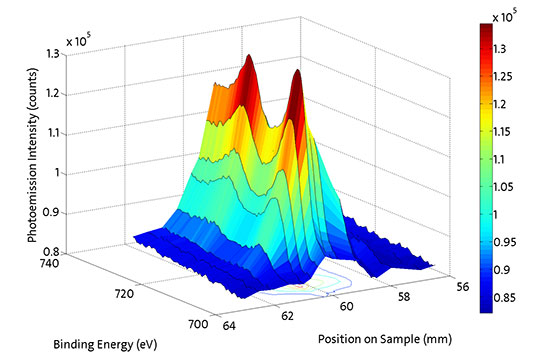Small Quantum Systems
Experiments with Icarus, Soft-Landing, free and supported Molecules and Cluster
Small Quantum System (SQS) stands for a large number of systems, where theier properties are dominated by quantum size effects. This are of research includes systems like atoms, molecules, free ion and clusters, e.g. the number of atoms per system ranges from 1 for the atoms up to several 100 for very big molecules or larger clusters.
Within our group core level spectroscopy on these systems ranging from atoms up to clusters and molecules with a few atoms (around 10) are performed. To access the core levels we are using synchrotron radiation, as as the free electron laser in Hamburg (FLASH). Aim of our experiments is to understand the electronic and magnetic properties of the small quantum systems.
Atoms and Molecules
The studies on atoms and molecules concentrate on the response of matter to highly intense electromagnetic radiation in the soft x-ray regime and the work is mainly performed within the framework of the SFB 925 together with the group of M. Meyer from X-FEL. A close collaboration exist also with K. Tiedtke from Hasylab/DESY.
Highly intense x-rays are able to excite not only one, but several electrons withon an atom (or molecule) simultanously or sequentially creating highly excited states of matter. We are using photoelectron as well as photoino spectroscopy to study the electronic structure and the dynamic of the decay of these states.
Time Resolved Studies
The XUV split-and-delay line developed in this group has been used to study multiphoton, nonlinear processes in Helium as well as Nitrogen. In Helium a two-photon double ionization process was used to determine the average pulse lengths of FLASH. A number as short as 30fs was found in 2008 as well as in recent measurements in 2012.
In Nitrogen we were able to see temporal coherence effects and to trace molecular dynamics of the double ionized Nitrogen molecule by observing the yield of double charged Nitorgen atoms as function of the delay.
Free Ions
Most of the matter in the universe exists in its ionized form, e.g., in stars, stellar atmospheres or nebulars. Also in the outer atmospheres of planets as the earth, ions are of great importance. Furthermore, the properties of ions are very importand in plasmas, i.e., in nuclear fusion reactors.
However, ions are very reactive and can be produced only in small amounts. Due to theier charge, they repell each other, so the maximum density in the laboratory is usually limited by the so called space charge limit to 10^8 ions/cm^3. One has to compare this to the density of a solid (10^23 atoms/cm^3) or a gas at a pressure of 1bar (1019 atoms/cm^3). Thus, 10^8 particles/cm^3 corresponds to a pressure of 10^-8 mbar. Unfortunately, in many ion experiments even such low densities can not be achieved and the partiell pressure is only in the order of 10^-11 mbar. This equivalent to 1^-10 atoms per mm^3, which is the typical upper limit of the focal size of a x-ray beam.
To perform experiments within an ion beam, we have developed together with groups from the University of Gießen (A. Müller and S. Schippers), University of Frankfurt (R. Dörner) and the FU Berlin (E. Rühl) within the framework of a BMBF collaboration the experiment PIPE.
Experiments on the magnetic properties of mass selected, free cluster ions are performed using the experimental setup GAMBIT. GAMBIT is using an ICR trap and the magnetic properties are obtained by x-rayx magnetic circular dichroism.
Photoelectron spectroscopy on free cluster ions using FLASH is performed within a collaboration with the group of K.H. Meiwes-Broer from the University of Rostock. A more detailed description of this setup can be found here.
PIPE
PIPE (Photon-Ion-Spectrometer at PETRA III) is a versatile tool to study all kind of ions: atoms, molecules and cluster. The experiment consists of two main chambers realising a merged-beams setup [1,2,6] and a COLTRIMS [3,4,5] and is placed permanently at the P04 XUV beamline of PETRA III, DESY.
At PIPE a ion source area exists to host a various type of ion sources. The produced ions can then be mass selected with a 1m radius 1,5T dipole magnet with a mass resolution of about 500. The mass selected ions can be studied about their reaction kinetics with x-ray photons from the XUV beamline in the COLTRIMS chamber or the absorption and fragmentation properties on absolute scale in the merged-beams chamber. The photon energy range of the XUV beamline can vary between 250eV and 3000eV, covering the the K- and L-edges of the most important elements for application, with tuneable polarization and a flux up to 1012 photons/s.
[1] Phaneuf et al., Rep. Prog. Phys. 62, 1143 (1999)
[2] Kjeldsen, J. Phys. B: At. Mol. Opt. Phys. 39, R325 (2006)
[3] Dörner et al., Phys. Rep. 330, 95 (2000)
[4] Ullrich et al., Rep. Prog. Phys. 66, 1463 (2003)
[5] Schmidt-Böcking, Physik Journal 9, 39 (2010)
[6] J. Phys. B: At. Mol. Opt. Phys. 47, 115602 (2014)

Deposited Clusters
Clusters represent a new class of materials with properties between those of the free atoms and the respective solids. Besides the new and interesting physical effects which can be observed for clusters, they also have an enormous technological importance, e.g. for the realization of electronic and magnetic nanostructures. Recent experiments on the magnetic properties of free transition metal clusters show for example a pronounced size dependence of the magnetic moments of the clusters.
However, for possible applications it is important to deposit the transition metal clusters on a substrate. For a detailed microscopic understanding of the properties of deposited clusters it is necessary to size-select the clusters prior to deposition. Experiments on well-defined, mass-selected clusters after deposition on a substrate require furthermore that the cluster size does not change during or after deposition. Up to now there have been only a few attempts to study clusters under such well-defined conditions spectroscopically.
ICARUS
We have developed a transportable (and synchrotron compatible), UHV cluster source named ICARUS which enables us to perform core-electron spectroscopy on well-defined, mass-selected, in-situ deposited metal clusters (n < 20; n number of atoms). The clusters are produced in a sputtering process, mass-selected with a magnetic mass spectrometer and finally deposited under soft-landing conditions (in an Ar-matrix) on a single crystal substrate.

„Soft-landing“
Our experiments on Fe, Ni, and Cr-clusters show that we are able to soft-land small clusters on a substrate and investigate them with inner-shell spectroscopies. It has been possible for the first time to spectroscopically identify small deposited clusters using near-edge x-ray absoprtion spectroscopy. For iron-clusters we have been able to show that for fragmentation-free deposition about 10-15 layers of Ar are necessary. Deposition in thinner Ar-layers leads to fragmentation of the smallest clusters upon deposition.
Cluster-substrate-interaction
Besides the soft-landing the cluster-substrate interaction plays a decisive role for the controlled deposition of size-selected clusters. The thermal stability of the deposited clusters against fragmentation and/or agglomeration caused by diffusion is different for different cluster-substrate combinations. While small iron clusters on an oxygen precovered Ru-surface are only weakly bound and show surface diffusion already at room temperature Ni-clusters on the contrary are stable on the same surface up to 800 K. Exceptionally strong cluster-substrate interaction is observed for Cr-clusters on oxygen covered surfaces. The Cr-clusters couple already at low temperatures (< 100 K) strongly to the adsorbed oxygen leading to Cr2O3-like signatures in the x-ray absoprtion data. In general the clusters show size-dependent differences in stability. For example heptamers which may be envisioned as magic clusters in two dimensions exhibit fairly high thermal stability.

Reactivity
In first experiments on the reactivity of deposited transition metal clusters we have investigated the interaction of deposited Ni- and Cr- clusters with oxygen. After deposition of the clusters on a clean metal surface the clusters were subsequently exposed to a few Langmuir of oxygen. For Cr as well as for Ni we see an energetic shift of the x-ray absorption resonances upon oxygen adsorption. However only for the Cr-clusters complete oxidation independent of cluster size is observed (see above).
Magnetic properties
Recently we have started to investigate magnetic properties of deposited transition metal clusters. In these experiments which have been performed at BESSY II in Berlin we have deposited 3d and 3d alloy clusters on ultrathin Fe- and Ni-films which have been epitaxially grown on a Cu(100)-substrate and remanently magnetized afterwards. The pronounced dichroic signals can be used to study size-dependent magnetic moments of the clusters.
Photoelectron Spectroscopy
First photoemission experiments on deposited Fe clusters have been performed at the Bessy Beamline U49-2 PGM. Small Fe clusters were deposited on a Cu (100) substrate and cooled down to 40K. Afterwards the clusters were exposed to a very well defined oxygen or carbon monoxide atmosphere. We were able to track an increase of the density of states at the Fermi energy as well as a quench of the copper 3d orbitals due to cluster substrate interaction. Also we found that the size dependent core level shift strongly decreases for oxidized clusters.

